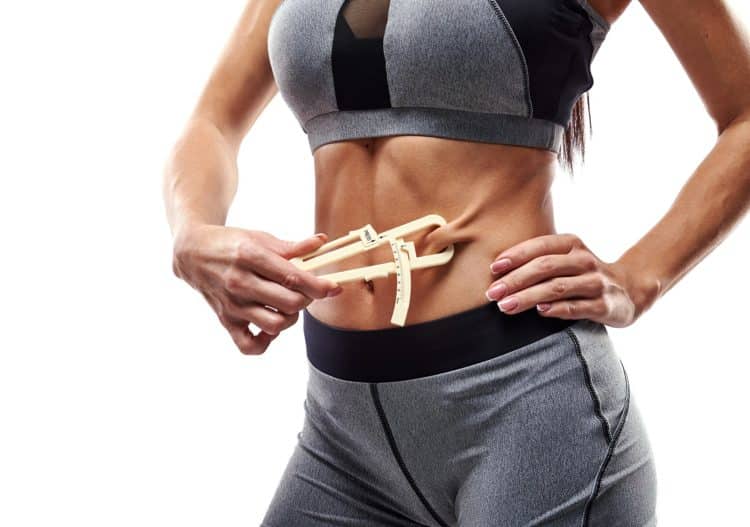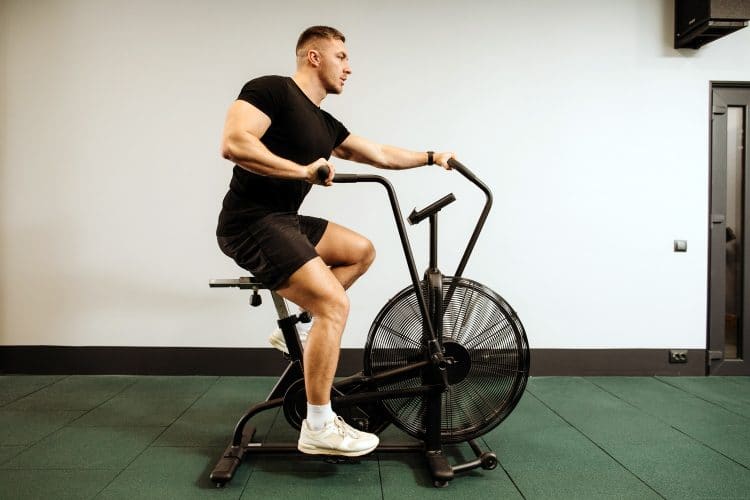Do not let the otter in the ottermode fool you. Building an ottermode body does not involve growing fur and gaining a belly. An ottermode body is characterized by a low body fat percentage, broad shoulders, toned muscles, and a shredded midriff.
Don’t get us wrong—we are all for body positivity, even for Mustelidae carnivores like otters. However, it is still a mystery why in-shape swimmers are referred to as having ottermode bodies while its namesake animal is the plus-sized member of the weasel family.
Michael Phelps and his 28 Olympic medals are the cover models for the ottermode body. In his prime, The Flying Fish had broad shoulders, a tiny waist, a low body fat percentage, a shredded midsection, and toned muscles.
If you think about it, swimmers, with their V-tapers, have the perfect foundation for building a chiseled and muscular physique, which gets us to the most pressing question—If swimmers have such a solid base for packing on size, why wouldn’t they want to beef up? Are they into CrossFit?
First, competitive swimmers remain lean to reduce drag, which is the resistance that water exerts on your body as you move through it. Also, now that we’re talking about it, there might be an underground exclusive swimming CrossFit club that we don’t know about yet.
Building an ottermode body goes beyond aesthetics and involves training for better functionality, agility, strength, and endurance. In this article, we’ll go over every aspect of building an ottermode body, including body composition, benefits, diet, and training.
Ottermode Body Composition
World-class swimmers are shredded to the bone. You might not see their obliques or glute and hamstring separation like you could on a pro bodybuilder because they lack muscle development. However, if these guys were to train and eat like a bodybuilder, they could walk into a bodybuilding contest in their speedos.
If you want to build an ottermode body, you should strive towards:
1. Low Body Fat Percentage
An ottermode athlete should be more muscular than a runner but not as jacked as an NFL player.
While there are no official numbers to qualify for an ottermode body, pro swimmers usually have a low body fat percentage, which puts their toned muscles on display at their full glory.

If you want solid abs, you need to lower your body fat percentage. There are no two ways about it. Here is the relationship between body fat and ab visibility:
- 20%+: With such a high body fat percentage, you will be soft around your midsection, and your abs will not be visible.
- 15-19%: It can be considered healthy, but it is unlikely that you will see any ab definition.
- 10-14%: This range is considered lean, meaning your abs will be visible.
- 5-9%: You will be peeled AF.
Pro swimmers with ottermode physiques usually have less than 12 percent body fat, which should be your goal when you start your transformation program.
2. Normal BMI
Body Mass Index, or BMI, compares your weight to your height to determine if you are over, under, or the right weight for your height.
For an ottermode body, you should target the normal BMI range. Here are what the BMI readings indicate:
- Underweight = 18.5 or less
- Normal weight = 18.5 – 24.9
- Overweight = 25 – 29.9
- Obese = 30 or more
Michael Phelps BMI:
- Height: 6′4″
- Weight: 198 pounds
- BMI: 24.1 (normal)
A normal or better BMI combined with a 12 percent or lower body fat percentage are the metrics you should be working towards.
Check out our convenient online BMI calculator to learn if your weight is healthy.
3. Broad Shoulders
The best pro swimmers have broad shoulders, which has also become one of the main characteristics of an ottermode body. Broad shoulders can help improve your performance in the pool, and swimming can help build broader shoulders—it’s a virtuous cycle.

4. Small Waist
It is no secret that competitive swimming is a high-intensity sport and is an incredibly effective way of burning calories. A tight waist with broad shoulders gives you the enviable V-taper.
Must Read: Slim Waist Workout Routine
5. Toned Muscles
If you want to build a chiseled physique, you’ll have to put in the hard work in the gym. Notably, since pro swimmers have a low body fat percentage, they can experience noticeable muscle development within the first couple of months of starting training. An individual with an ottermode physique won’t have protruding muscles, but they’ll be drawing eyeballs as soon as they take their shirt off.
6. Functionality
An ottermode body represents speed, agility, mobility, and functionality. Don’t expect to look like The Rock on an ottermode physique program. Why is that, you ask? Because heavy rocks sink.
In a swimmer’s training program, you’ll be performing exercises that promote functional strength and mobility, which will help improve your performance in day-to-day tasks.
Addressing the elephant in the room
If you look at pro swimmers, you’ll notice most of them have toned—but not bulky—legs. A swimmer’s legs and arms are toned and defined but don’t have a lot of meat on them as it can interfere with their performance in the pool.
However, you cannot use this as an excuse to skip leg day. A swimmer needs powerful legs to push them to the gold.
Benefits of Building an Ottermode Body
These are the benefits of working towards an ottermode physique:
1. Fires Up Metabolism
If you have a low body fat percentage and work to keep it that way, your metabolism will work round the clock, helping you burn calories even when you’re physically inactive.
2. Reduces Risk of Cardiovascular Diseases
Achieving and maintaining a low body fat percentage requires a lot of cardio, which will help reduce your risk of developing cardiovascular diseases. Furthermore, aerobic exercise is recommended by the American Heart Association for people with (or at risk of) heart disease.
3. Improves Balance
On an ottermode body transformation program, you’ll be performing a ton of abdominal exercises, which can help improve your posture and stability and your ability to bear weight.
Check Out: How Many Abs Can You Have? 4-Pack vs 6-Pack vs 8-Pack
4. Boost Endurance and Stamina
Cardio and HIIT training are indispensable parts of an ottermode body program. These aerobic exercises strengthen your heart and lungs and improve your circulation, which can help you build stamina and endurance.
5. Enhances Flexibility
Flexibility is one of the most overlooked aspects of a swimmer’s physique. It plays a crucial role in a swimmer’s performance and appearance. Swimming like an otter requires agility and mobility, and you’ll be working on it in the ottermode body training program.
How To Build an Ottermode Body
Here is how to carve an ottermode physique:
1. Watch Your Mouth
Like in every other transformation program, diet plays a critical role in building an ottermode body. You need to set a daily caloric goal for yourself and stick to it. Your calorie target will depend on your current and goal weight.
If you are overweight, you need to follow a calorie deficit diet to shed the extra kilos. On the other hand, you will need to bump up your calorie intake if you fall in the underweight BMI category.
2. Resistance Training
If you cut out calories from your diet and go overboard without adding a resistance training routine to your regimen, you might end up looking like Christian Bale in The Machinist (2004).
You need to lift weights to build muscle mass and carve a physique Greek gods would be proud of. Plus, resistance training will help improve your performance in the pool by improving your body structure and boosting your strength.
3. Cardio
Cardio will be a constant in your life on the ottermode body program. If you want to shed body weight, you should perform two cardio sessions in a day.

The first will be a LISS (low-intensity steady state) session that you’ll do first thing in the morning for about 20-30 minutes every day. The other session will be a 10-minute HIIT (high-intensity interval training) workout done at the end of your weight training routine.
Check Out: HIIT vs. LISS Cardio: Which One Is Best for Fitness and Fat Loss?
Here is a prospective Ottermoed training regimen:
- Monday: Back and Arms
- Tuesday: Cardio
- Wednesday: Chest and Shoulders
- Thursday: Cardio
- Friday: Legs
- Saturday: Cardio
- Sunday: Active Rest
4. Swimming
It is a no-brainer, right? The best way to look like a pro swimmer is to become one. Training in water will help you adapt and work the muscles that will make you better at the craft. On the ottermode body program, spend at least 30 minutes swimming every day.
Wrapping Up
The ottermode Body workout will make you look like you train but not really. Don’t be surprised if you suddenly start getting a lot of the infamous “do you lift?” thrown at you.
Building a lean, diced, athletic physique won’t be easy, but it is far from unachievable. Now that you know everything there is to know about building an ottermode physique, get behind it, tiger otter!


